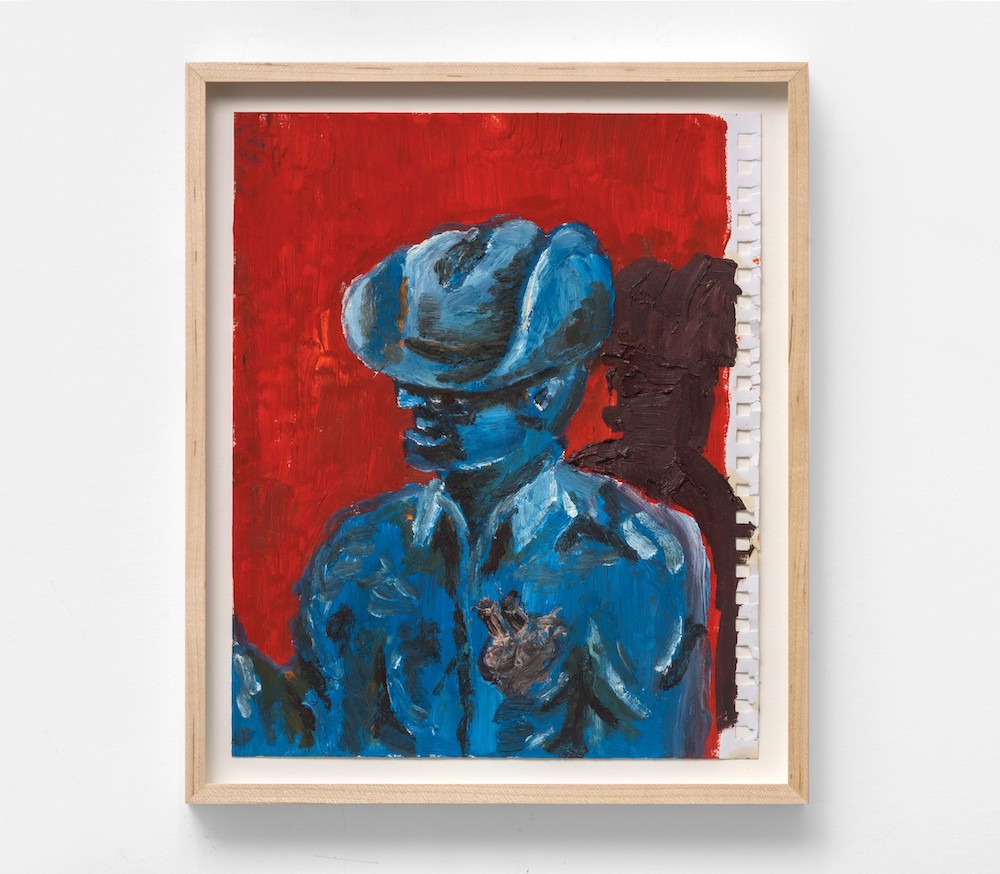Ken Taylor Reynaga’s exhibition, “A Mano,” features a wide array of paintings and ceramics that speak to the personal and shared experience of cultural duality, and interrogate the belief that being multicultural places one in an identity limbo. Using his own experience being Mexican American, Taylor Reynaga’s works eschew realism in favor of abstracted—at times surreal—everyday scenes that appear every bit as personal as they are universal.
The languid pastoral Hemitite Mountain Range (2021) is, arguably, the most emblematic of Taylor Reynaga’s aesthetic style. The painting features a black road weaving through vibrant, sunset-colored mountains backed by a pastel blue and pink sky within which floats a large white cowboy hat. Like Magritte’s The Son of Man (1968) or Time Transfixed (1938), the hat hovering mid-air appears like an out of place intrusion (even more due to the hat’s uncanny resemblance to UFOs). Yet the cowboy hat also seems to blend perfectly into the environment, like at any moment it could plop atop the mountain’s peak as if that were natural.
A symbol of vaqueros and cowboys alike, the cowboy hat plays a recurring role in Taylor Reynaga’s work. The small painting Blue Man’s Heart (2020) depicts a blue colored man standing before a red wall, his face obscured by his cowboy hat and an anatomical black heart on his chest. The bright red and blue play with one another; each color competing for attention while also heightening the other’s brilliance. Their only converging point is the small purple shadow the man casts against the wall. It’s a highly emotional painting that plays into the trope of “the lonesome cowboy” to depict isolation and despair. With the hat in mind, one could assume Blue Man’s Heart to be a metaphor for being Latinx in the United States. However, Taylor Reynaga’s ability to render a moment simultaneously specific and universal allows the painting, and the exhibition, to be a touching off point for how we consider intersectional identities.


